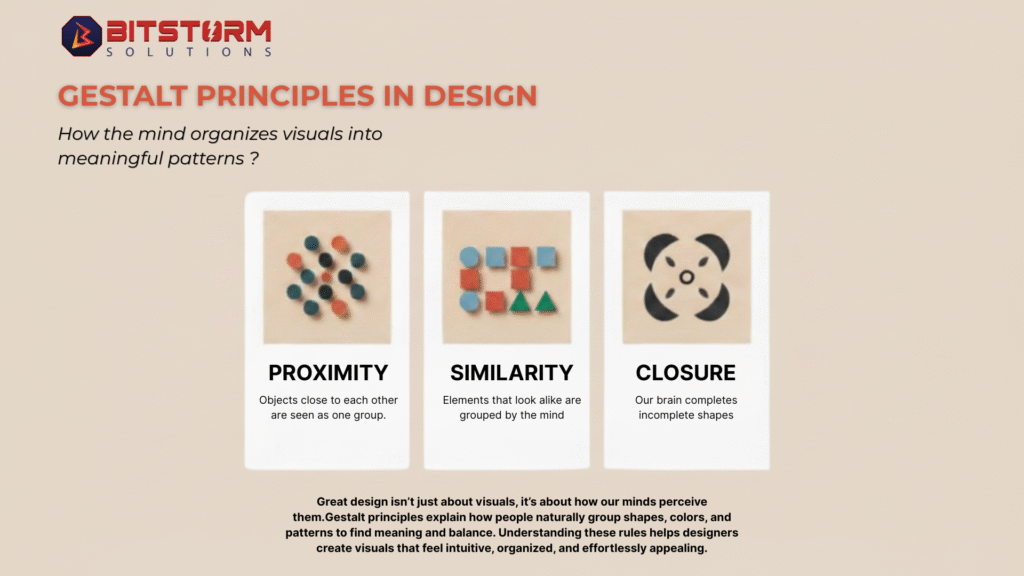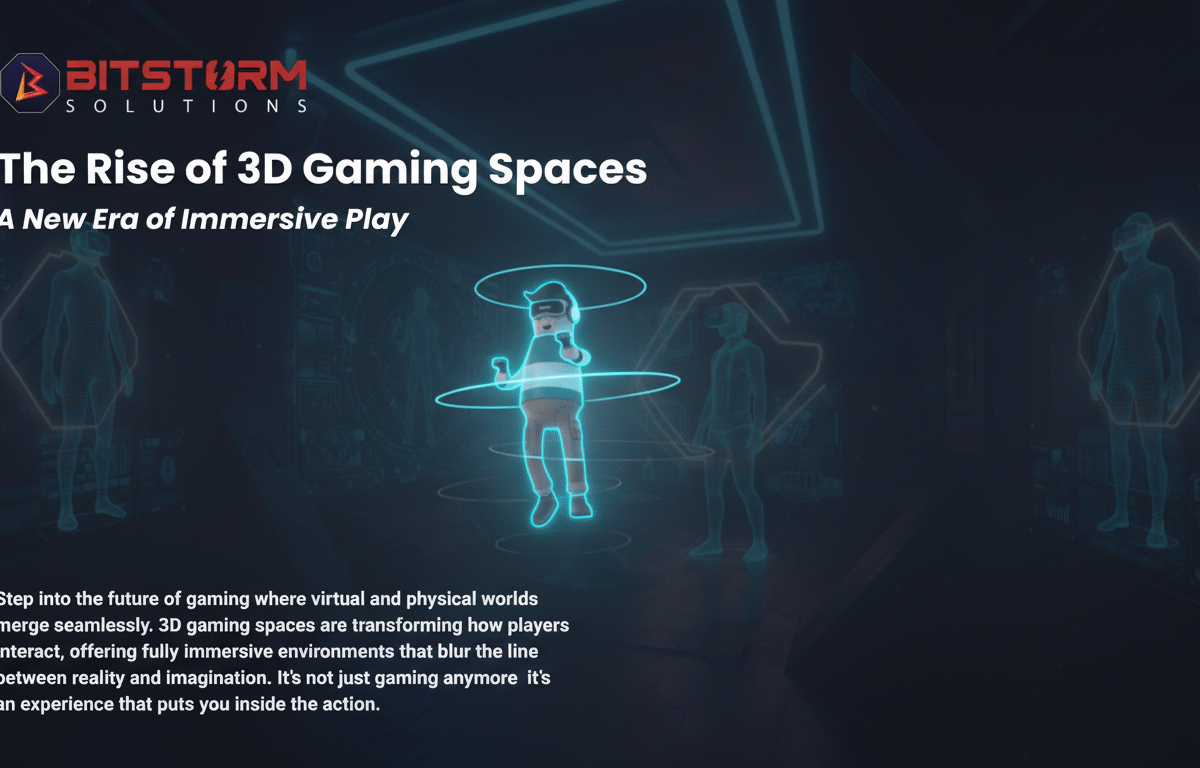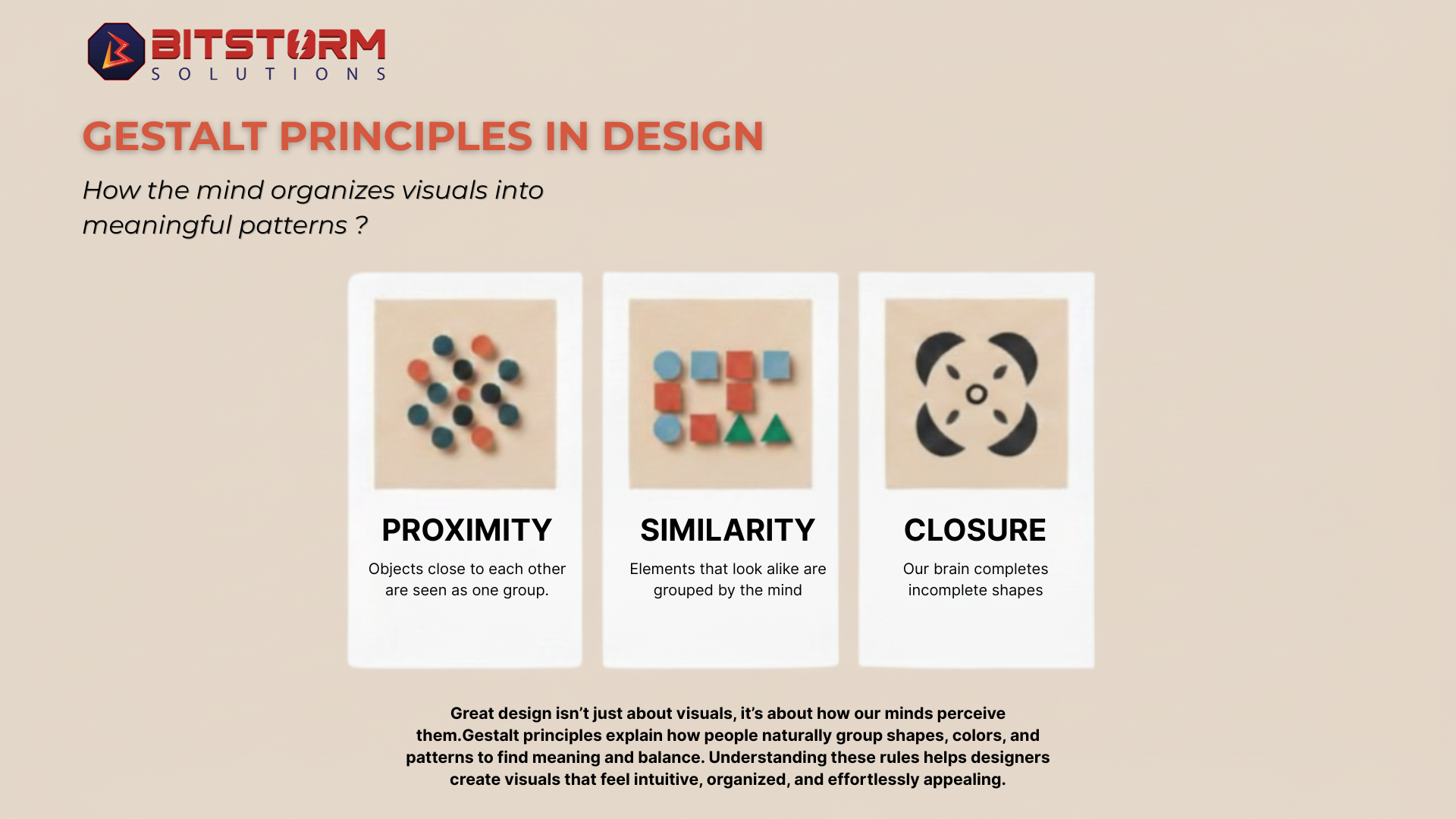
Design is not merely about what we see; it’s about how we see it. Every color, line, and shape interacts with the human mind in a way that creates meaning, order, and emotion. Great design doesn’t just appeal to the eyes; it communicates subconsciously. It connects logic with emotion, simplicity with purpose, and chaos with clarity.
This is where Gestalt principles come into play. These timeless psychological insights explain how humans perceive and organize visual information. Derived from early 20th-century psychology, these principles describe how our minds naturally group similar elements, recognize patterns, and fill in gaps to create complete, meaningful images.
For designers, understanding these principles is more than a theoretical exercise. It’s a practical toolkit that helps craft visuals that feel right, those that are organized, harmonious, and intuitively easy to understand.
1. Proximity: The Power of Nearness
The principle of proximity tells us that objects placed close to one another are perceived as belonging to the same group. Our brain tends to associate closeness with connection.
In design, proximity is used to build structure and hierarchy. By grouping related elements such as icons, text, or buttons, we help users quickly understand relationships between items. For example, in a website layout, grouping navigation links together signals that they belong to the same category.
When used effectively, proximity creates balance and helps guide the viewer’s eye through a logical and organized visual path. It minimizes confusion and enhances readability, providing a subtle yet powerful way to make design more human-friendly.
2. Similarity: Creating Harmony Through Consistency
Similarity is the principle that our minds group elements that share common traits such as shape, color, size, or texture. We instinctively see these similar elements as part of a larger whole, even if they are separated by distance.
Designers use similarity to maintain consistency across visual systems. Think of brand identity, where consistent typography, color palette, and icon style create cohesion across platforms. Or in user interface design, where repeating patterns like identical buttons or icons help users navigate intuitively.
By embracing similarity, we establish visual unity. It allows users to focus on the message rather than getting distracted by inconsistency. It’s the silent glue that holds design together and gives it rhythm, predictability, and trustworthiness.
3. Closure: Completing the Incomplete
Our minds love to solve puzzles. The closure principle taps into this tendency, using the brain’s ability to fill in missing information and perceive a complete shape even when parts are absent.
Designers use closure to create intrigue and elegance. A logo, for example, might leave intentional gaps that our minds naturally complete, making the design more engaging and memorable. This principle plays on curiosity and imagination, inviting the viewer to participate rather than passively observe.
Closure also adds sophistication to visual storytelling. It allows for simplicity without losing meaning, reducing clutter while keeping the message powerful.
The Deeper Impact: Why Gestalt Principles Matter?
Gestalt principles go beyond visuals; they influence how people think, feel, and respond to design. In a world overflowing with information, these principles help cut through the noise and bring clarity to communication.
They remind us that humans perceive wholes, not parts. A good designer, therefore, doesn’t just arrange elements but orchestrates them to form patterns that resonate. Whether in branding, web design, advertising, or user experience, Gestalt thinking ensures every element works together to tell a unified story.
When applied thoughtfully:
Proximity improves readability and structure.
Similarity enhances consistency and flow.
Closure adds creativity and emotional engagement.
Together, they shape how users interact with design, guiding attention, evoking emotion, and reinforcing brand identity.
Design That Feels Effortless
At its core, Gestalt design is about perception over perfection. It’s about creating visuals that feel effortless, balanced, and human. When viewers don’t have to think too hard to understand what they’re seeing, your design has succeeded.
By mastering these psychological principles, designers can move beyond aesthetics and build experiences that truly connect visuals that not only look beautiful but make sense.
Great design isn’t random; it’s intentional. And when it aligns with how the human mind naturally works, it becomes more than design; it becomes communication, emotion, and experience.
The future of retail will belong to those who leverage intelligence, not assumptions.



